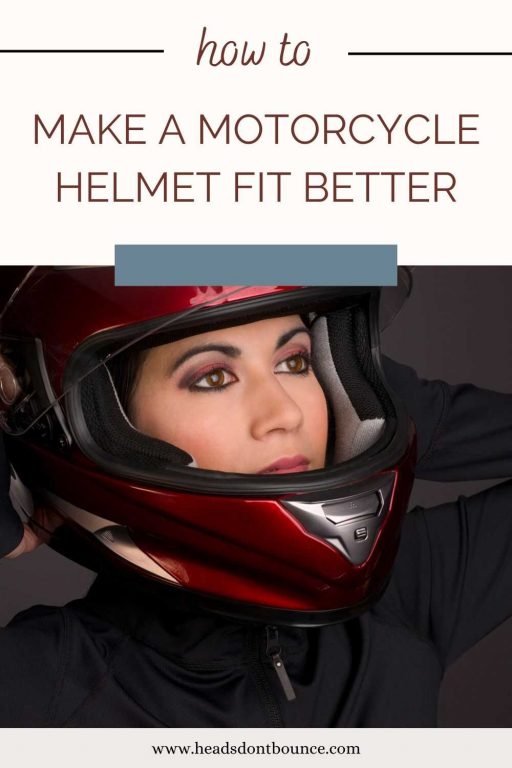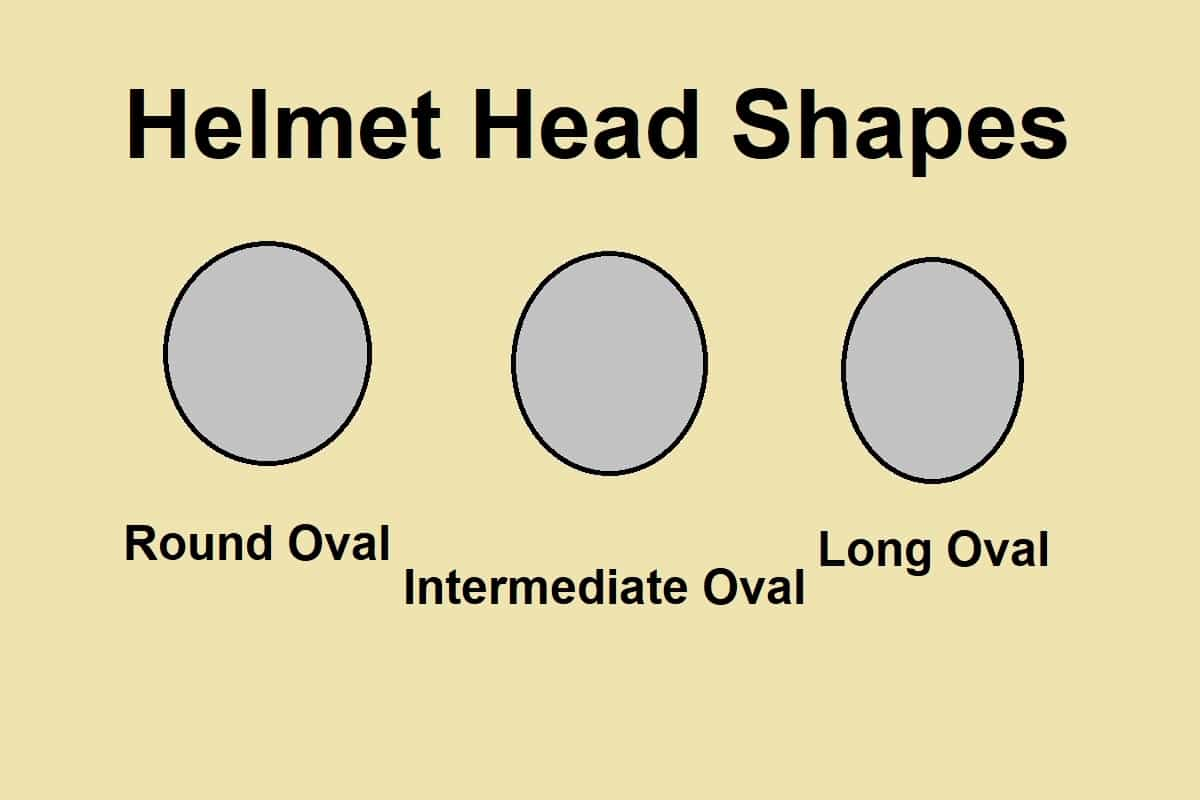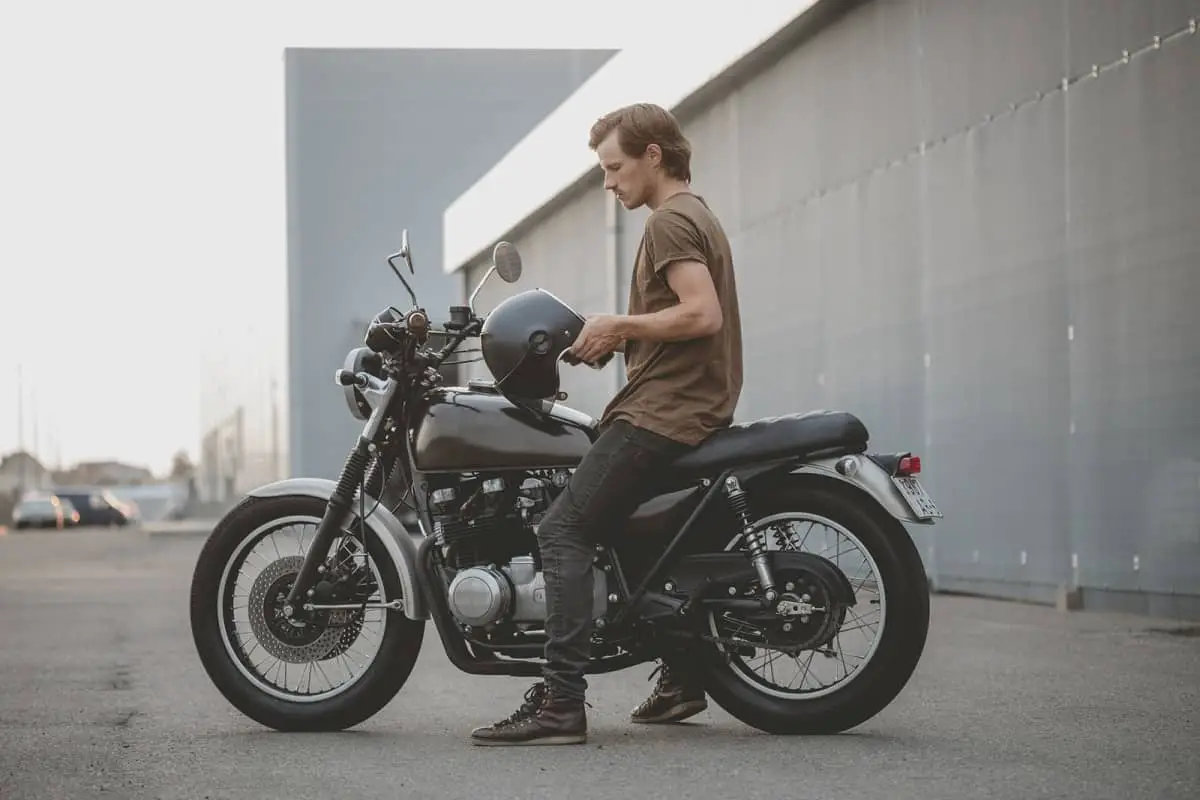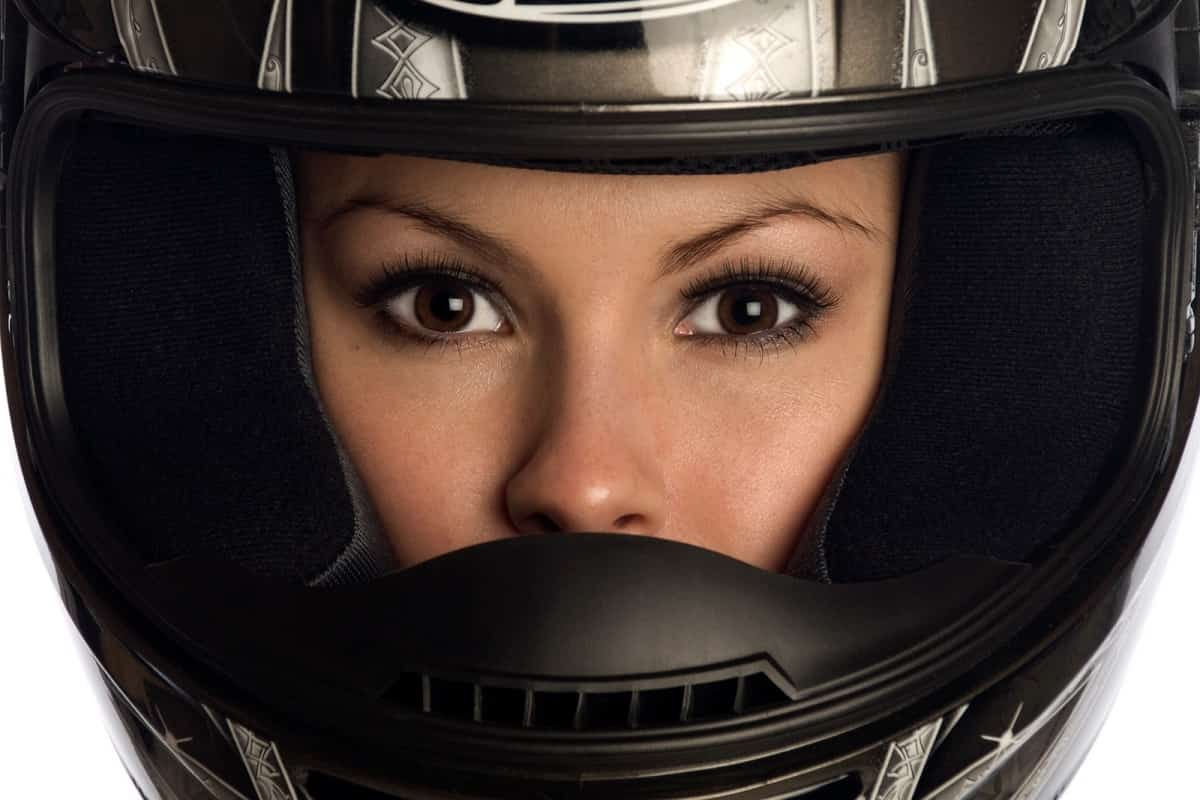How To Make A Motorcycle Helmet Fit Better
The single most important thing when it comes to motorcycle helmets is ensuring you have the correct fit for your head.
Too tight and it will be uncomfortable which can be painful and distracting on the road; too loose and the helmet won’t do its job of protecting you in the event of an accident.
However, knowing how to make a motorcycle helmet fit better is always useful, as it can be hard to get the perfect fit from just wearing a helmet in store for a few minutes. So let’s take a look.
KEY TAKEAWAYS
* Head shape is important. Start by looking for a helmet in your head shape.
* Measure your head size, then try different brands in your size for the perfect fit.
* Take the time to ‘break in’ your helmet to suit your head shape.
* Swap out the cheek pads for thicker or thinner pads to suit.
Page Content
Save To Pinterest:

Disclosure: As an Amazon Associate, we earn from qualifying purchases. Disclosure Statement.
Motorcycle Helmet Head Shape
We all have different shaped heads. Round Oval, Intermediate Oval, Long Oval, and a bunch of variations of shapes in between, making things a bit tricky for helmet manufacturers, as there is simply no ‘one-size-fits-all’ rule when it comes to motorcycle helmets.
The first step that I recommend is that you go into a store where there is a wide range of choice when it comes to helmets and take your time trying them on. A good sales assistant will be able to measure your head and assess your head shape to give you a starting point to work from in terms of sizes and brands.
AGV is notorious for egg shaped helmets which mean they are wider at the back than the front. Shoei tends to lean towards a long oval shape, while Arai is round oval.
However, there are exceptions to every rule; this is particularly true with manufacturers now having much broader selections in their helmet line ups, particularly with the retro helmet resurgence.
HJC helmets I have found to be one of the most accommodating brands across the board for all head shapes.

Another tip when first trying and buying your helmet, insist on keeping the helmet on your head for a good 10 minutes or more while you wander around the store looking at other items, this will give you an idea of any pressure points that might occur if the helmet is too tight. If you remain comfortable during this time it’s likely a good fit.
Related Article: How Tight Should A Motorcycle Helmet Be?
Motorcycle Helmet Break In
Breaking in a motorcycle helmet is a simple process.
Just wear it!
Wear it around the house, watch TV in it, sit in the garden and read a book, whatever you want just wear your helmet so it gets used to the shape of your head and the padding adjusts accordingly.
Wearing your helmet for an hour or two will give you a good idea if your helmet fits you properly.
If you have no pressure points anywhere on your head, your cheeks don’t hurt, no headaches, and conversely your helmet isn’t falling all over the place when you move around then the chances are your helmet fits and you are good to go out on your motorcycle.
How To Tighten Motorcycle Helmet
A loose helmet is incredibly dangerous. A helmet is meant to cushion your head all over, and on impact, the intention is that the helmet will absorb the impact rather than your head.
If your helmet is too loose there are two things that can happen: the first is that on impact your head will rattle around in the helmet and suffer multiple impacts; the second, at speed, the wind can catch your helmet and move it around your head, leaving you blind… neither of which is great.
So how to make a motorcycle helmet fit better if it is loose?
There is a difference between loose and too loose. If you feel cushioned in your helmet but you think there is still a bit of movement, you could try tightening the chin strap, or even swapping out the cheek pads for some that are a few mm’s thicker. As long as the helmet feels secure everywhere else, fits across your forehead and doesn’t slip around, then those two simple fixes should do the trick.
If the helmet still feels loose then you need to get a new helmet that fits your head snugly.
Related Article: How To Know Your Helmet Size
Helmet Too Tight
If your helmet is too tight, this can be uncomfortable and can cause headaches, pain around pressure points and be an overall horrible experience; worst case is it can be distracting, and distraction while riding a motorcycle isn’t a great thing.
This content was originally published on headsdontbounce.com. If it appears on another website, it is a violation of the copyright owned by headsdontbounce.com.
How to tell if a motorcycle helmet is too small? The key to knowing if a helmet is too small, is if there is pain across your forehead, or on your ears. Other pressure points around your head may also signal that your helmet is too tight. If you take your helmet off and you are visibly sore across your head then the helmet is too small.

This is why I stress trying a helmet on for a decent amount of time in store before purchasing, pressure points will usually show themselves pretty quickly after 10-20 minutes of wear. If they do, then you should go up a size.
Sometimes the helmet will fit everywhere but maybe it just feels a bit tight on the top of your head or the cheek pads? Well, with time these things will wear down, and you do need them to fit snugly, however, being painful is not necessary.
How to make a motorcycle helmet fit looser? Some manufacturers will offer to swap the cheek pads and inner lining to make the helmet that bit looser, so that it is more comfortable.
Usually big reputable stores will carry a range of cheek pads in store so you can try them to ensure the correct fit. If the helmet is too loose after the swap, then you probably need to look at a different helmet shape that will fit your head better.
How To Make A Motorcycle Helmet Fit Better
There are a series of things to check when buying your helmet:
Helmet Size
Taking a soft tape measure and measuring round the crown of your head will give you a starting point to use, you can use your measurement against the manufacturers size chart.
Motorcycle Helmets will come in a variety of sizes. Cheaper helmets will come in 1 or 2 shell sizes and the actual size of the helmet will be determined by more or less padding on the inner layer; more expensive helmets will have up to 4 or 5 shell sizes. A helmet with more shell size options will offer a more custom fit.
It is important to not assume that a Medium size helmet in one brand will be the same size as a Medium in another, even if the measurements are the same; so ensure you try the helmets on, you may find yourself a size Small in one and Medium in the other.

Cheek Pads
A quick way to check if your helmet fits properly is to focus on the cheek pads. Are they in line with your cheekbones? And, do your cheeks make you look like a chipmunk?
Another quick way to check if your cheek pads are correctly fitting is that you should not be able to comfortably chew gum; your cheeks should be pushed up nice and firm, but not uncomfortable.
Helmet Position
Your helmet should sit low on your forehead, maybe one or two finger widths above your eyebrows. The cheek pads should be pushing your cheeks up nice and firm. You should have great vision out of the visor (if full-face) and your vision shouldn’t be restricted by the top of the helmet, or the sides.
When on your head, you should be able to feel the helmet comforting your head all the way round your head, and there should be no noticeable gaps in the contact or pressure points.
Chin Strap Adjustments
Chin Straps on motorcycle helmets, whether they are ratchet straps or D-rings, will be adjustable. You should tighten the straps until they are tight and no more than one or at most two fingers can fit between your strap and your throat.
Add/Remove Padding
Some manufacturers such as Arai, will offer a custom fit which entails swapping out the cheek pads and head lining. This is particularly useful when it comes to those who are in between sizes (particularly if the shell sizes are different too).
A Small might be a bit too loose, but X-Small too tight, so free of charge Arai will swap the cheek pads and lining to a few mm’s thicker or thinner from the next size up or down and this should accomplish the perfect fit. Some Arai helmets also have a 5mm layer on the cheek pads that is removable again with the intention of giving the perfect custom fit for owners.

Scorpion’s EXO line has inflatable cheek pads, it’s a system that you can pump up the cheek pads to make sure they fit nice and snug.
It is not recommended to add or indeed remove padding in a DIY sense; if you feel your cheek pads are too tight, then you may need a new helmet.
If your helmet is not very old but the cheek pads have worn down, you should be able to purchase a new set from the manufacturer, don’t ride with the helmet if it feels loose.
Stretch The Helmet
It is not recommended to stretch your motorcycle helmet. The only stretching should be done by your head in the helmet, which will compress the inner lining; if you feel the helmet needs stretching it is likely too tight and you need a bigger size. Stretching the helmet can damage the integrity of the inner and outer shell, affecting performance in an accident.
Save To Pinterest:

I hope we have covered the subject of ‘How To Make A Motorcycle Helmets Fit Better’ to your satisfaction. If you enjoyed this article, feel free to leave a comment or question below. Thanks!

